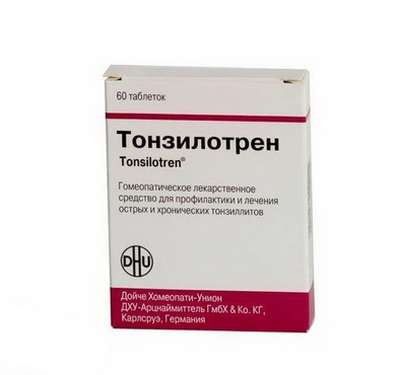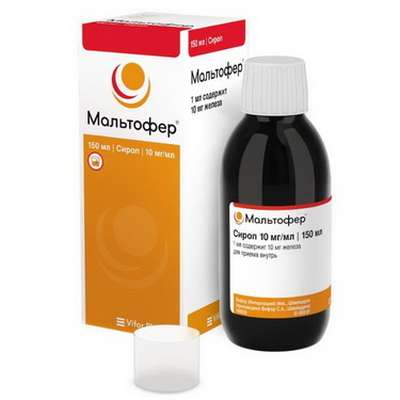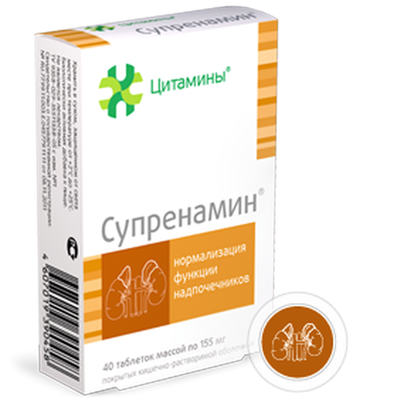Calcium in a human body
09 Dec 2016
Calcium is the microcell performing diverse functions in a human body. It is plastic material for a skeleton, takes part in enzymatic processes, maintains normal neuromuscular excitability. The calcium role in immune processes is extremely important, it regulates permeability of cytolemmas: in the presence of calcium ions they keep integrity, in case of absence become porous, easily passable. Calcium - the regulator of permeability intracellular the lizosom membranes thanks to what it is highly effective in case of inflammatory and allergic reactions (the desensibilizing therapy). Ions of calcium take part in initial stage of activation of T-lymphocytes and implementation of the second signal for proliferation of T-lymphocytes (Birx D. et al., 1984, tsit. according to G. N. Drannik et al., 1994). Folding processes - antifibrillation calcium - dependent. Read calcic exchange in more detail.
For the best digestion of calcium is required vitamin D
Calcium is metabolic connected with phosphorus therefore it is important to support a proportion of receipt of these elements 1:1
Calcium in food. Contains in milk and dairy products, some vegetables (cabbage, garlic, a celery, parsley), fruit and berry cultures (a gooseberry, currant, strawberry, sweet cherry) much. Some products (cereals, a sorrel, spinach) slow down absorption of food calcium. These products contain phytin or oxalic acids which as a result of interaction form insoluble salts - fitata and oxalates, and absorption of calcium is at a loss. Therefore it is necessary to consider a combination (compatibility) of foodstuff.
In more detail: Content of calcium in products
Calcium in bodybuilding and fitness
Calcium is one of the most widespread minerals of an organism, it has paramount value in bodybuilding for several reasons:
- Bodybuilders at a diet not always have enough a calcium, and also the protein consumed in bodybuilding is rich with phosphorus which suppresses its assimilation.
- It is the main mineral which carries out reduction of muscles.
- Body height of muscles and training stress increases the needs for a calcium.
- Female athletes have to monitor calcium entering as the depression of level of estrogens bound to trainings leads to decrease of digestion of calcium and augmentation of its losses especially carefully.
- High level of a calcium can slow down processes of absorption of iron, Zincum and other mineral substances and trace substances necessary for an organism.
Indications for calcium use
However, naturally, also cases when additional reception of calcium in the form of drugs or nutritional supplements is absolutely necessary aren't excluded. It:
- specific features of a diet, first of all, full rejection of dairy products (yogurt, cream, whole milk, cottage cheese, cheeses);
- deficiency of body weight and disturbance of a menstrual cycle at female sportswomen;
- caloric content of a daily diet less than 2000 kcal/days;
- "true" vegetarianism;
- the osteoporosis phenomena (irrespective of a sex of the athlete);
- consumption of a large amount of protein (including in the form of nutritional supplements and amino acids);
- the period after an enterosorbtion;
- the accelerated destruction of teeth without the obvious reasons;
- frequent muscular cramps.
In similar situations, certainly, there is a question: to what drugs of calcium to give preference?
Drugs of calcium
If to take usual salts of a calcium (a carbonate, Natrii phosphas, Sodium lactatum, gluconat), then the greatest number of a calcium contains in a malata, a carbonate, then Natrii phosphas, Sodium lactatum and gluconat follow. At the same time gluconat and Sodium lactatum are transferred better.
The Most acquired calcium form malat and calcium citrate. However effect of the drugs containing except calcium salts D3 vitamin and a number of the components strengthening calcium absorption, undoubtedly, above. At preventive reception kalition the use with a magnesium is desirable its simultaneous and though a magnesium reduces digestion of calcium a little, but protects from adjournment of a calcium in tissues. Anyway you shouldn't accept calcium additives at deficiency of a magnesium in organism.
It must be kept in mind that the normal content of calcium can't serve in blood serum as reliable criterion of lack of its deficiency. You can also like Renisamin.
It is necessary to pay attention also: carry large numbers in a nutrition of a fibrous tissue, oxalic acid (contains in spinach, chocolate, a beet tops of vegetable, a rhubarb) to the factors reducing calcium absorption, phytic acid (is in external layers grain and, therefore, in products from whole grain), consumption of a large amount of protein, alcoholic beverages; to the factors improving this absorption - the increased need for a calcium, presence of vitamin D, lactose, performance of exercises of power character).
Read in more detail the scientific review: A calcium for weight loss
Time of reception
At night there is an accelerated release of mineral salts from an organism (circadian acceleration of resorptive processes in a bone). Therefore it is expedient to accept drugs of a calcium after a lunch and in the evening that will prevent the accelerated loss of a calcium in the second half of night, especially at the reduced its level (or absence) in an intestine. The negative dose effect of pharm therapist activity of a calcium becomes perceptible: in low doses this biometal are soaked up better, than in high. In this regard it is more rational to accept drug several times a day.
Recommended doses
DRI (the recommended daily doses) for the calcium arriving with nutrition and additives will be the following:
- women at the age of 19 — 50 years — 1000 mg;
- women are more senior than 50 years — 1200 mg;
- pregnant women — 1000 mg;
- nursing mothers — 1000 mg;
- men at the age of 19 — 50 years — 1000 mg
- men are more senior than 50 years — 1200 mg.
The national institute of health (NIH) recommends accepting additives with the calcium and vitamin D (helping to acquire this mineral) to those people who receive less its necessary daily dose, including women with a triad and female sportswomen. If at your ration there is a calcium quantity, don't accept all dose in 1200 or 1000 mg in the form of additive. Too larger dosages can promote formation of stones in kidneys.
Before accepting calcium drugs, it is necessary to consult with the doctor as process of an absorption of this element in a blood in digestive tract is very difficult, it depends on many circumstances - age, illnesses which are available for the person, acidity of a gastric juice, availability of vitamin D in an organism, a condition of hormonal system, etc.
I address women: if at you irregular monthly, the monthly cycle is broken or stop monthly on the eve of the competition, you have to address the good expert in sports medicine or the gynecologist familiar with your sport. The termination of production of estrogen at young age can significantly affect health of osteal system. And in this case there is a probability of development of an osteoporosis at the earliest stages.
Side effects
Scientists from John Hopkins's university reported "attention" that use of additives which contain calcium in the structure is destructive affects heart. At the same time, the research showed that natural products in which there is calcium, on the contrary, are useful to an organism.
As authors of work consider, the excess volume of calcium in a human body leads to formation of processes, is destructive influencing heart. Conclusions are drawn after the long experiments which continued 10 years. Following the results of research experts concluded that calcium not for all 100% is removed from an organism, especially at people in old age. Thus, calcium naaplivatsya in soft tissues, including arteries and even an aorta. Scientists considered data of patients aged from 45 up to 84 years. Within the work scientists used medical information of 2742 patients who answered questions of the delivery and accepted by dietary supplement. The smallest risk of cardiovascular diseases appeared at those people who consumed calcium in the natural form — with cottage cheese, greens and other products.
Calcium causes chronic infections of lungs
The bacterium of pyocyanic rod is life-threatening pathogenic, living in hospitals. About ten percent of all intrahospital infections, in particular pneumonia, are caused by this pathogen. Researchers from University of Basel found out that a calcium causes transition from an infection, acute to a chronic form. Researchers also explained why antibiotics are less effective in fight against a pathogen in its chronicity.
The intrahospital infections caused by pyocyanic rod difficult will respond to treatment because of its multiresistance to antibiotics. The bacterium is the leading reason of chronic pulmonary infections at patients with the weakened immunity.
On initial stage of pneumonia the activator uses a wide arsenal of weapon, so-called virulent factors to intrude in the owner and to bypass his immune system. During progressing of a disease the bacterium adapts the strategy due to transition from sharp for chronic virulence. It stops production of virulent factors and, instead, makes a protective matrix and reduces the speed of its growth. The ecological signals directing to this transition were still unknown. The team headed by professor of biology Urs Dzhenal determined calcium as a signal which specifically causes transition to chronic virulence.
Researchers could show the clinical importance of the results. At the patients suffering the chronic infection of sinegnoyny stick which throughout all life damages their pulmonary fabric develops. "The majority of isolates of airways at patients with mukovistsidozy kept the sensitivity to calcium, – Dzhenal told. – We consider that it allows a bacterium to adapt constantly the virulence in response to often changing conditions in airways. One of features of violation of regulation of a homeostasis of calcium. We assume that the increased calcium levels at patients promote transition of an infection from a sharp form to chronic. It is a benefit to a pathogen as provides its long-term survival in airways. It becomes more difficult to treat patients with a chronic form of an infection".
Substances influencing homeostasis of calcium
In a cell at rest concentration of free ions of Sa2 + makes 0,1 microns. Rising of concentration on 10 microns at exaltation leads to reduction of muscle cells (electromechanical interface), in glandular cells — to devastation of vesicles (electro-secretory interface). At achievement of equilibrium of concentration of Sa2 + in and out of a cell become peer; partially a calcium is bound to proteins of a blood plasma. Being bridged to Natrii phosphas, Sa2 + it is besieged in the form of gidroksilappatit (a mineralization of bones). Osteoclasts are called "cells-mi-devourers". They blast bones and release Sa2+. Minor changes of extracellular concentration of Sa2 + can influence physiological functions, for example, at depression of concentration of Sa2 + excitability of sceletal muscles (a cramp sharply increases at a hyperventilation). Constant extracellular concentration of Sa2 + is maintained by three hormones.
Hormone vitamin D can be formed in a skin of a 7-degidrokholesterin under the influence of ultraviolet rays. At an insufficient insolation administration of this vitamin C a nutrition is necessary (for example, to include in a ration an offal — a liver). Vitamin D is formed by a double hydroxylation: in a liver — in situation 25 and in kidneys — in situation 1 (calcitriol = vitamin D). The hydroxylation in situation 1 depends on a homeostasis of Sa2 + and is stimulated with parathormone, and also depression of concentration of Sa2 + and Natrii phosphases in a blood. Vitamin D strengthens an absorption of Sa2 + and Natrii phosphases in an intestine and the return absorption in kidneys. When rising concentration of Sa2 + and Natrii phosphases in a blood adjournment of gidroksilapatit in bones amplifies. At deficiency of vitamin D the mineralization in bones is weakened (rachitis, osteomalacy).
Therapeutic value of vitamin D: replacement therapy. At diseases of a liver it is prescribed at pathology of kidneys calcitriol. Among vitamin D <25-OH - vitamin D <1,25-di-gidroksi-vitamin D efficiency grows, i.e. the effect occurs quicker, and stops later. At an over dosage hypocalcaemia with adjournment of Sa2 salts + in tissues, especially in kidneys and in vessels develops: calcification.
The polypeptide parathormone is allocated from parathyroid glands at depression of concentration of Sa2 + in a blood. It activates osteoclasts and causes an osteolysis; in kidneys strengthens the return absorption of Sa2+, at the same time increases secretion of Natrii phosphases. When dropping concentration of Natrii phosphases in a blood ability of Sa2 + to a deposition in bones decreases. At a failure of a parathormone for replacement therapy prescribe vitamin D which unlike parathormone is effective at oral administration. Drug is received by genetic engineering methods; it represents derivative parathormone with the shortened chain that is necessary for receptors. It can be applied at therapy of osteoporosis in the period of post menopause and leads to restoration of bone tissues. Unlike hyperparathyreosis in this case this drug was unexpectedly effective that, apparently, is caused by a special route of administration: the daily subcutaneous injection which causes "shock" effect becomes. Besides, enough Sa2 + and vitamin D has to be entered into an organism.
The polypeptide calcitonin is allocated S-kpetkami a thyroid gland at an acute hypercalcemia. It reduces contents Sa2 + by blockade of function of osteoclasts. It is applied at hypercalcemia and an osteoporosis. At severe pains in bones also calcitonin injections have the anesthetizing effect.
Treatment of giperkaltsiyemia:
- 0.9% NaCI solution with furosemide-> increase in removal of Sa2 + kidneys;
- inhibitor of osteoklast calcitonin or clodronat (bifosfonat) -" reduction of binding of Sa2 + in bones;
- glucocorticoids.

 Cart
Cart





